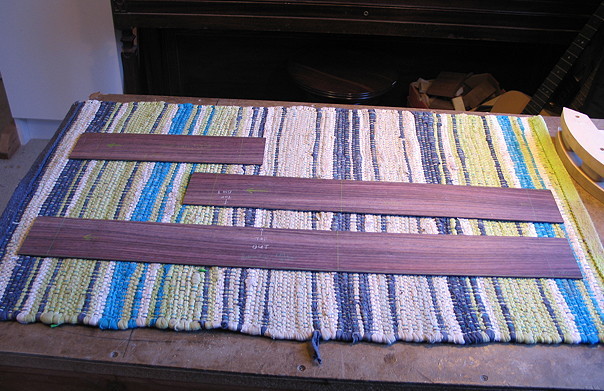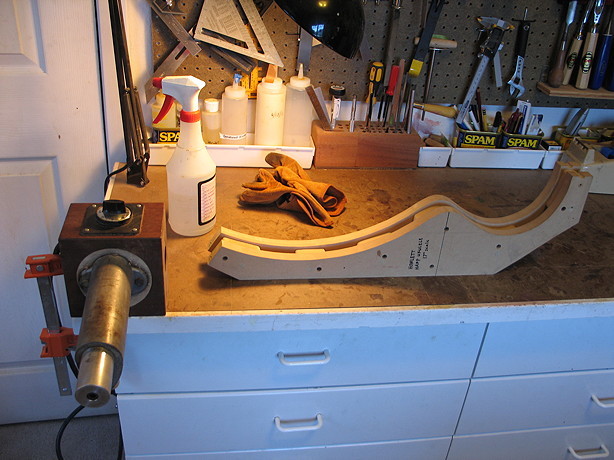Saturday, June 23rd, 2012:
Now it was time to bend the sides! The first thing I did was to figure out all the dimensions of the three side pieces --- the long harpbox side (25-3/4" long) on the bass side of the uke, the treble side (18" long) that runs past the neck block to the harpbox, and the short right-hand side of the harpbox (9" long).
I decided this time not to profile (taper) the sides until later, after I have glued the sides to the neck and tail blocks and have glued on the top. The reason for this is, because of the somewhat weird geometry and extra harpbox of this instrument, I had a little bit of trouble, on the last harp uke, fitting and gluing on the back; my profiling of the sides before I had bent them somehow wasn't quite right for this instrument, and I had to do some adjusting and reshaping of the sides to make the back lie solidly on the sides.
Anyway, here are the sides, after I have cut them out. I have cut them all 73mm wide (the height of the side at the tail end of the uke).

|
|
Another thing I decided to do differently this time was to do the bending by hand, on my electric bending iron. Since, on the last uke, quite a bit of the bending had to be done by hand, anyway, even when I used the side bender, I thought I might as well do it all by hand this time. (And, anyway, it is a little less nerve-wracking and involved than using the side bender --- I don't have to do all the wrapping and careful timing and worrying about possibly scorching the 2mm thin sides in the side bender --- all that's needed is the bending iron, a spray bottle of water, and a form to check the bends against.) Also, it's easy to see and control what you're doing when you're doing it by hand, and it's kind of a satisfying feeling to be more "hands-on" with the bending.
Below is my simple set-up:

|